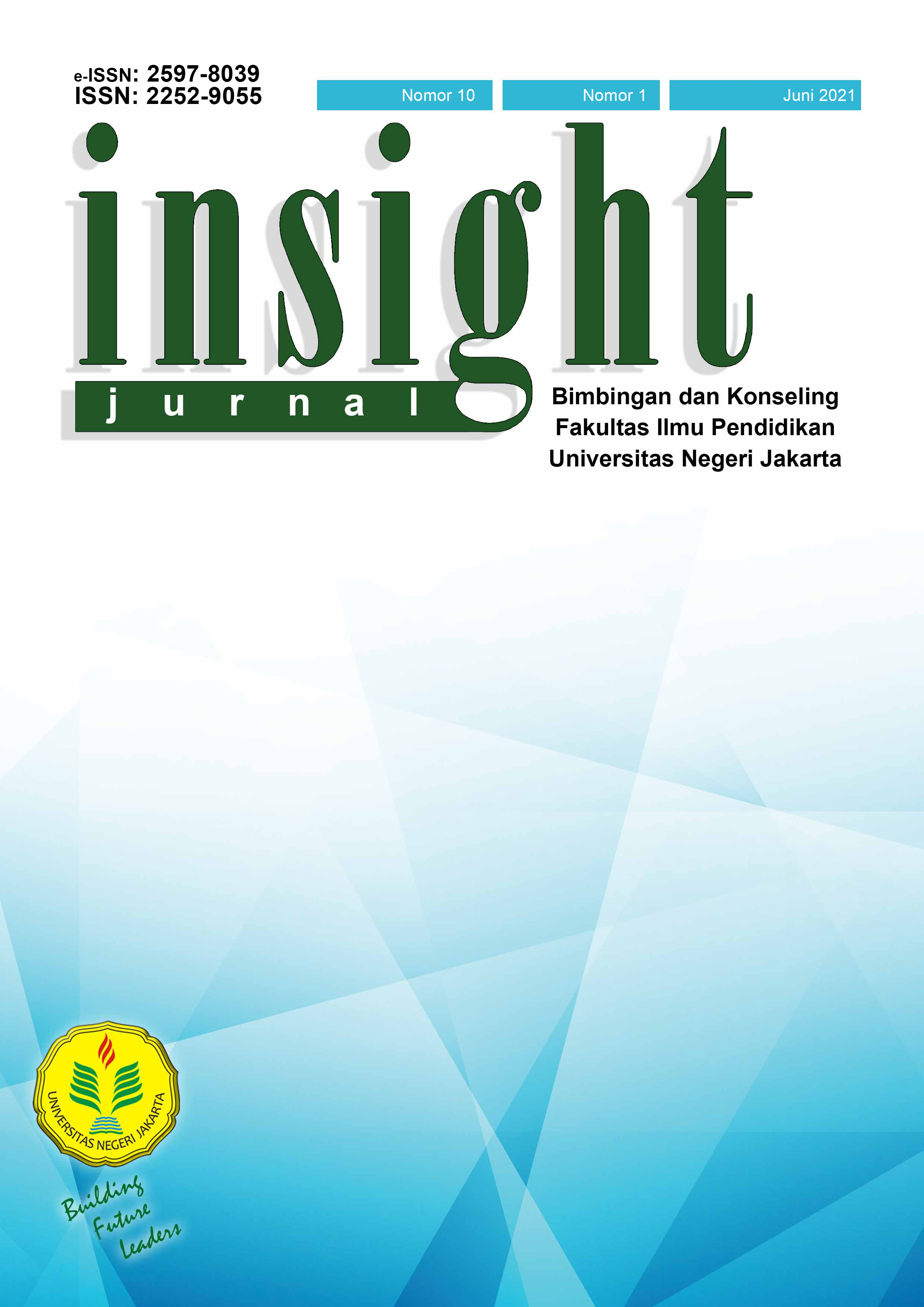Gambaran Dimensi Body Image Siswi Terhadap Pengembangan Self-Help Book Dengan Body Image Cognitive Behavioral Therapy
Abstract
Penelitian ini bertujuan untuk mengetahui gambaran dimensi body image pada siswi di salah satu sekolah SMK Negeri Jakarta dan kebutuhan untuk meningkatkan dimensi body image dengan self-help book. Sampel penelitian ini menggunakan teknik random sampling dengan jumlah sebanyak 141 peserta didik. Alat ukur yang digunakan adalah Multidimensional Body-Self Relations Questionnaire – Appearance Scales (MBSRQ-AS) dan studi kebutuhan self-help book mengenai dimensi body image. Hasil penelitian menunjukkan bahwa gambaran dimensi body image pada siswi berada pada kategori positif 8,9%, netral 9,2% dan negatif 9,9% . Hal tersebut dimensi body image siswi dalam kategori negatif, sebagian besar siswi belum memiliki pengetahuan mengenai materi dimensi body image, semua siswi pada studi kebutuhan mengenai self-help book terdapat hasil 71,3% dari 141 siswi belum pernah membaca self-help book, dan 79,7% yaitu 114 siswi yang tertarik untuk mengetahui lebih jauh dan membaca self-help book ini. Oleh karena itu, pengembangan self-help book sangat penting untuk membantu siswi dalam meningkatkan dimensi body image.
References
Ali, M., & Asrori, M. (2006). Psikologi remaja. Bumi Aksara.
Ayu, I. P. K., & Kristiana, I. F. (2013). Perbedaan citra tubuh pada mahasiswi pada fakultas eksakta dan fakultas non-eksakta universitas diponegoro semarang. Jurnal Empati, 2(4), 5–6.
Bergsma, A. (2008). Do self-help books help? Journal of Happiness Studies, 9(3), 341–360. https://doi.org/10.1007/s10902-006-9041-2
Cash, T. F. (2000). The multidimensional body-self relations questionnaire. Unpublished Test Manual, 2, 1–12.
Cash, T. F. (2002a). Body image eating disorders and obesity : an integrative guide for assessment and treatment (J. K. Thompson (ed.)). American Psychological Association (APA).
Cash, T. F. (2002b). The multidimensional body–self relations questionnaire (MBSRQ) (3rd Revisi). The Guilford Press.
Cash, T. F. (2008). The body image workbook : an eight-step program for learning to like your looks. In New Harbinger Publications, Inc. New Harbinger.
Cash, T. F., & Smolak, L. (2011). Body image : a handbook of science, practice and prevention. In Guilford Publications, Inc.
Desmita. (2005). Psikologi Perkembangan. PT. Remaja Rosdakarya.
Fazriah, N., Badrujaman, A., & Fitri, S. (2017). Pengaruh konseling kelompok dengan pendekatan body image-cognitive behavioral therapy terhadap siswi smk yang memiliki citra tubuh negatif. Jurnal Bimbingan Dan Konseling, 6(2), 207–208.
Garber, N. (2015). Cognitive behavioral therapy-and body image. EatingDisorderHope.Com. EatingDisorderHope.com
Grogan, S. (2007). Body image understanding body dissatisfaction in men, women, and children. Routledge.
Jarry, J. L., & Ip, K. (2005). The effectiveness of stand-alone cognitive-behavioural therapy for body image: A meta-analysis. Body Image, 2(4), 317–331. https://doi.org/10.1016/j.bodyim.2005.10.001
Santrock, J. W. (2016). Adolescence sixteenth edition (Sexteenth). United States of America: Mc Graw Hill Education.
Suryani, L., Syahniar, & Zikra. (2013). Penyesuaian diri pada masa pubertas. Jurnal Ilmiah Konseling, 2(1), 136–137.
Watkins, P. Lou, & Clum, G. A. (2008). Handbook of self-help therapies (W. P. Lou & G. A. Clum (eds.)). Newyork: Routledge.
Wilson, D. M., & Cash, T. F. (2000). Who reads self-help books?: development and validation of the self-help reading attitudes survey. Elsevier, 29(1), 119–129.
Authors who publish with this Journal agree to the following terms:
- Author retain copyright and grant the journal right of first publication with the work simultaneously licensed under a creative commons attribution licensethat allow others to share the work within an acknowledgement of the work’s authorship and initial publication of this journal.
- Authors are able to enter into separate, additional contractual arrangementfor the non-exclusive distribution of the journal’s published version of the work (e.g. acknowledgement of its initial publication in this journal).
- Authors are permitted and encouraged to post their work online(e.g. in institutional repositories or on their websites) prior to and during the submission process, as it can lead to productive exchanges, as well as earlier and greater citation of published works.
Users/public use of this website will be licensed to CC BY







